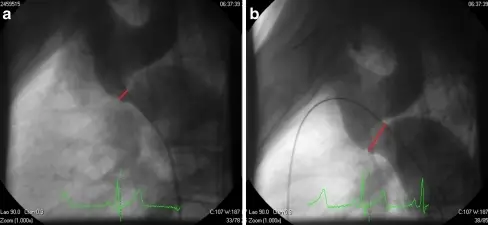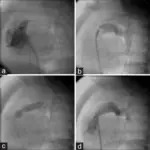Coarctation of the aorta is a congenital defect that is characterized by a narrowed portion of the aorta which may be isolated or in association with other heart defects such as a bicuspid aortic valve and ventricular septal defect.
What is the Pathology of Coarctation of the Aorta?
Coarctation of the aorta pathology consists of a constricted aortic segment that affects thickening of the medial aspect of the vessel. The constriction is mostly located in the thoracic aorta.
How does Coarctation of the Aorta Present?
Coarctation of the aorta with upper extremity hypertension or decreased lower extremity blood flow. It is characterized by weak, delayed, or absent femoral pulses and a systolic pressure in the lower extremity that is lower than in the upper extremity by >10 mmHg. A heave is commonly palpated.
How is Coarctation of the Aorta Diagnosed?
Coarctation of the aorta is diagnosed with septic workup, ABG, electrocardiogram, chest x-ray (inverted E or 3 sign), 2D echo, and MRI.
How is Coarctation of the Aorta Treated?
Coarctation of the aorta is treated with angioplasty at 18-24 months old; however, presence of hypertension may necessitate earlier repair. An IV prostaglandin may be given to maintain ductus arteriosus open for alternative blood flow.
What is the Prognosis of Coarctation of the Aorta?
Coarctation of the aorta prognosis is poor with high mortality following surgical repair, and a mortality of 90% in patients with uncorrected defects by the mean age of 35 years old.



